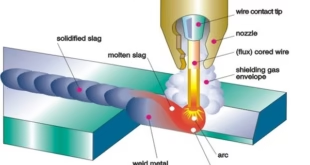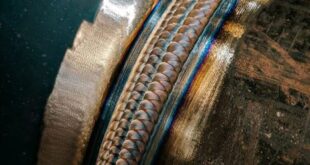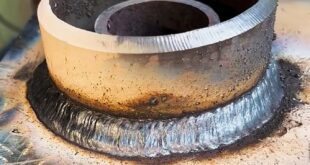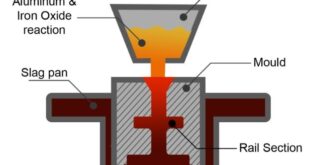What is a Fillet Weld?
Introduction
Definition of Fillet Weld
A fillet weld is a type of weld commonly used in joining two pieces of metal, typically at right angles, in a lap joint or a T-joint configuration. It is a weld that is triangular in cross-section and has a 90-degree angle between the two pieces being joined. The weld is created along the junction where the two metal surfaces meet, and it does not require the use of a groove or seam preparation, making it one of the simplest and most common welding techniques.

The purpose of this article is to provide a comprehensive understanding of fillet welds, from their definition and basic concept to their applications and common uses. By delving into the characteristics, visual appearance, and various techniques involved, this outline aims to equip readers with valuable knowledge about fillet welds. Additionally, it will cover the quality inspection, challenges, troubleshooting, and safety considerations associated with fillet welding.
Characteristics and Visual Appearance
Fillet welds exhibit distinct visual characteristics due to their triangular shape. Some key features include:
- The weld’s throat thickness, which is the distance from the root to the face of the triangle.
- The leg length, which is the distance from the junction of the two metal surfaces to the highest point of the triangle.
- The fusion line, where the weld metal merges with the base metal.
- The weld face, which is the visible surface of the weld.
Importance of Fillet Welds in Various Industries
Fillet welds play a crucial role in various industries and applications due to their versatility and strength. Some of the key reasons why fillet welds are important include:
- Structural Fabrication: In construction and structural engineering, fillet welds are used to connect beams, columns, and other structural elements. They provide significant strength and stability to the overall structure.
- Manufacturing and Metalworking: Fillet welds are widely employed in manufacturing processes such as sheet metal fabrication, welding of brackets, frames, and components in various machinery and equipment.
- Automotive Industry: Fillet welds are essential in the automotive sector for joining different metal parts of vehicles, such as frames, chassis components, and body structures.
- Shipbuilding: In the shipbuilding industry, fillet welds are extensively used to connect various sections of ships and ensure the structural integrity and safety of the vessels.
- Aerospace: Fillet welds are used in the aerospace industry to assemble aircraft components, ensuring lightweight and strong structures.
- Infrastructure: Fillet welds are vital in the construction of bridges, pipelines, and other infrastructure projects, ensuring secure connections and durability.
- General Fabrication: Fillet welds are found in everyday items, from furniture to metal appliances, where sturdy connections are needed.
Types of Fillet Welds
Flat Fillet Welds
Description and Applications: Flat fillet welds are created on a horizontal plane where the two metal pieces being joined are parallel to each other. These welds are commonly used in applications where the joint is accessible from one side only. Flat fillet welds are frequently employed in sheet metal fabrication, construction, and general welding projects.
Advantages:
- Simple and easy to execute, making them suitable for beginners.
- Provide good joint strength and distribute loads evenly.
- Suitable for joining materials with different thicknesses.
Limitations:
- Not suitable for joints requiring high strength and load-bearing capacity.
- May require post-weld finishing to achieve a smooth surface.
Horizontal Fillet Welds
Description and Applications:
Horizontal fillet welds are performed in a horizontal position on a vertical joint. These welds are commonly used in applications where the joint is positioned vertically and can be welded from the side. Horizontal fillet welds are often found in structural steel connections and welding tasks on the sides of vertical plates.
Advantages:
- Strong and efficient joint for vertical connections.
- Suitable for joining components with restricted access.
Limitations:
- May require specific welding techniques to prevent weld sagging.
- Limited to certain joint configurations due to the vertical orientation.
Vertical Fillet Welds
Description and Applications:
Vertical fillet welds are performed in a vertical position on a horizontal joint. These welds are used when the joint is positioned horizontally and can be welded from the top. Vertical fillet welds are often employed in pipe welding, tank fabrication, and other applications where the joint orientation is horizontal.
Advantages:
- Provide strong and effective joint in the horizontal position.
- Suitable for joining plates and sections oriented horizontally.
Limitations:
- Welder skill is crucial to maintaining proper weld shape and avoiding defects.
- Some joint positions may require positional welding techniques.
Inclined Fillet Welds
Description and Applications:
Inclined fillet welds are performed at an angle other than 90 degrees. These welds are used when the joint configuration or access requires welding at a specific angle. Inclined fillet welds find applications in diverse welding tasks where the joint orientation demands a non-standard approach.
Advantages:
- Suitable for joining components with irregular shapes or non-standard joint angles.
- Can provide adequate strength and load-bearing capacity when executed correctly.
Limitations:
- Welding at an angle requires additional skill and experience.
- May demand specialized fixtures or positioning tools for precise weld placement
Fillet Weld Quality and Inspection
Importance of Quality Control
Quality control in fillet welding is of paramount importance to ensure the integrity and safety of the welded joints. Proper quality control measures help identify and rectify defects, ensuring that the welds meet the required standards and specifications. Key reasons for emphasizing quality control include:
- Ensuring the structural stability and load-bearing capacity of welded components.
- Preventing potential welding defects that could compromise the weld’s strength.
- Minimizing the risk of weld failure, which could lead to costly repairs or accidents.
- Complying with industry standards, codes, and regulations.
Visual Inspection
Visual inspection is one of the most basic and essential methods for assessing fillet weld quality. A trained inspector visually examines the weld surface and surrounding areas for various indications of defects, such as:
- Cracks or fractures in the weld or base metal.
- Incomplete penetration or fusion.
- Excessive porosity or voids.
- Undercuts, overlaps, or irregular weld bead profiles.
- Misalignment or improper size of the weld.
Visual inspection provides immediate feedback on the weld quality and can identify surface-level defects. It is an integral part of the quality control process and is often used in combination with other inspection methods.
Non-destructive Testing Methods
Non-destructive testing (NDT) methods are utilized to assess weld quality without causing damage to the welded joint. Common NDT methods applied to fillet weld inspection include:
- Ultrasonic Testing (UT): Uses high-frequency sound waves to detect internal defects, such as lack of fusion and cracks.
- Magnetic Particle Testing (MT): Detects surface and near-surface defects by applying magnetic particles to the weld and observing their behavior.
- Liquid Penetrant Testing (PT): Identifies surface defects by applying a liquid penetrant and using a developer to make the defects visible.
- Radiographic Testing (RT): Involves the use of X-rays or gamma rays to examine internal weld defects and assess the weld’s quality.
- Eddy Current Testing (ECT): Detects surface and near-surface defects by inducing eddy currents in the weld and measuring their changes.
Acceptance Criteria and Standards
Acceptance criteria and standards define the acceptable quality levels for fillet welds based on specific industry requirements and codes. Various standards, such as those set by the American Welding Society (AWS) and the International Organization for Standardization (ISO), provide guidelines for fillet weld dimensions, tolerances, and allowable defects. Welds must meet these criteria to be considered compliant and safe for their intended applications. Welding inspectors refer to these standards to determine whether a weld passes or fails the quality inspection process.
By implementing rigorous quality control, performing thorough visual inspections, utilizing appropriate NDT methods, and adhering to acceptance criteria and standards, fillet welds can be consistently produced to meet the required quality levels and ensure the reliability of the welded joints.
FAQs
What is a fillet weld?
A fillet weld is a triangular weld used to join two metal pieces at right angles without the need for groove preparation.
What are the common applications of fillet welds?
Fillet welds are widely used in structural fabrication, manufacturing, automotive, shipbuilding, and various infrastructure projects.
What are the advantages of flat fillet welds?
Flat fillet welds are easy to execute, suitable for joining materials with different thicknesses, and widely used in sheet metal fabrication.
In which joint configuration are horizontal fillet welds commonly used?
Horizontal fillet welds are commonly used in vertical joints where welding can be performed from the side.
What are the challenges associated with vertical fillet welds?
Welder skill is crucial to maintaining proper weld shape, and positional welding techniques may be required for certain joint positions.
When are inclined fillet welds used?
Inclined fillet welds are used in joints with irregular shapes or non-standard angles that require welding at a specific angle.
Why is visual inspection important for fillet weld quality?
Visual inspection allows quick identification of surface-level defects, ensuring weld integrity and safety.
What are non-destructive testing methods for fillet welds?
Non-destructive testing methods include ultrasonic testing, magnetic particle testing, liquid penetrant testing, radiographic testing, and eddy current testing.
What are acceptance criteria and why are they crucial for fillet welds?
Acceptance criteria define the acceptable quality levels for welds based on industry standards, ensuring compliance and safety.
How can quality control ensure strong and reliable fillet welds?
Quality control measures help identify and rectify defects, ensuring welds meet required specifications and adhere to safety standards.
Conclusion
In conclusion, understanding fillet welds is essential for professionals in various industries that rely on welding as a fundamental joining process. Fillet welds, characterized by their triangular shape and 90-degree angle, offer simplicity and versatility, making them widely used in construction, manufacturing, automotive, aerospace, and other applications.
Quality control and inspection play a vital role in ensuring the integrity and reliability of fillet welds. By emphasizing quality control measures, such as visual inspection and non-destructive testing methods like ultrasonic testing and radiographic testing, potential defects and flaws can be detected and rectified, reducing the risk of weld failure and ensuring compliance with industry standards and regulations.
The different types of fillet welds, including flat, horizontal, vertical, and inclined welds, offer specific advantages and limitations, and understanding their applications is crucial for achieving successful welding outcomes.
Adherence to acceptance criteria and standards further guarantees that fillet welds meet the required specifications and safety standards for their intended purposes. By following proper preparation and welding techniques, welders can produce strong and reliable fillet welds, contributing to the structural stability and longevity of welded components.
 Welding of Welders All about Welding and Welders
Welding of Welders All about Welding and Welders



